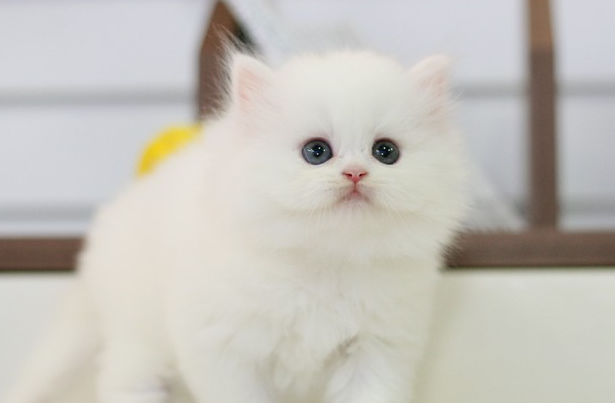The sweet-looking Persian cat is now a popular cat, elegant demeanor, so there is the “Princess of Cats”, is one of the world’s favorite cat lovers like purebred cats.
Origin of the Persian Cat
Persian cat (Persian cat) There are many theories about the origin of the Persian cat.
For example, cats originating from the indigenous cats of Iran and Afghanistan, or cats introduced to Europe from Turkey, and cats bred from the mating of Persian cats and Turkish Angora cats, and so on.
The most generally recognized origin is a breed based on the native long-haired cats of Afghanistan and the Angora long-haired cats of Turkey, which was born in 1860 after more than 100 years of selective breeding in the United Kingdom.
In the past, the European court of noblewomen, very popular in the portrait painting in the arms of pets, because of this, has an elegant and noble appearance of the Persian cat, just in line with the noblewomen’s noble status, quiet character, so that they will honestly stay in the lap of the noblewoman.
With all of these conditions, the Persian cat has become a popular and gentle cat breed for indoor keeping.
And this cat was introduced to the country in ancient China during the Tang Dynasty, along the Silk Road from the Kingdom of Persia, which was the name of the country of ancient Iran, hence the name Persian cat.
Persian Cat Personality Traits
Purebred Persian cat head large and round, forehead, nose, jaws are flat, nose is very short and collapsed, the bridge of the nose is wide, the eyes are large and round, ears are small, the tip is rounded, the two ears are very well separated, the limbs are short and straight, the paws of the feet are large in a short rounded, the whole body is full of like a silky, soft, fluffy and glossy hair, the tail is short and symmetrical with the body, very imposing, giving a noble and arrogant temperament.
Persian Cat Personality Traits
Persian cat temperament gentle and elegant, smart and agile, understanding, less movement and good quiet, called the sound of fine and soft, love pampering, neutral character, demeanor elegant, born a pampered attitude, giving people a kind of gorgeous, graceful and noble feeling.
Their silky long coats need to be brushed daily, but this task is also fun for Persian cat poachers to maintain their long coats, just in time to jerk the cat off in name only.
The Persian is a very gentle, quiet-loving cat that is not as aggressive as the average cat.
However, if the Ragdoll cat is quiet like a goddess, the equally quiet Persian cat looks a little bit dorky because of its round head.
Persian cats are also very stubborn and what they don’t eat is what they never will, until their owners get a new one!
Top 5 color palettes for Persian cats
Persian cats have a wide variety of fur colors, and there are five major color families, of which many colors have been recognized by various international cat breeder associations. White, black, blue and light yellow are more common, while tortoiseshell and red are more precious.
Black Persians were one of the first solid color cats to become popular in the UK. McClaren. One of Mrs. Morris’s cats named Satan won all divisions in England in the 1890s.
Black Persians became even more popular in the United States. A very large Black Persian male cat named King Max won first place in the 1897, 1898, and 1899 Poston Cat Shows.
Notes on Persian Cat Breeding
Persian cats are long haired cats and it is very important to groom them.
Persian cats are prone to shedding, especially the belly fur is most likely to be tangled and knotted, which can easily harbor dirt and bacteria, so it is best to set aside 30 minutes every day to brush its coat and remove the dead hair at the same time.
Tears in the eyes of purebred Persian cats are a common problem, the facial structure is not quite the same as other cat breeds, the tear ducts are shorter, when it sees food or yawns, it is easy to shed tears. We just need to scrub the Persian cat’s eyes more often in general.
Persian cats are covered with hair and lack sweat glands on the surface of the body, so body heat is not easy to dissipate, making them very susceptible to heatstroke, so they need to pay attention to the indoor temperature.
In addition, Persian cats are very sensitive to their kennels, food bowls, water bowls, and potties, and they will notice any slight changes that can easily irritate them. If the food bowl is changed arbitrarily, the Persian cat will probably refuse to eat. Therefore, in the process of keeping Persian cats, do not arbitrarily go to change these utensils. If you really want to change them, you can put the new ones together first and use the two together for a period of time, so that the cat can get used to it, and then take away the old ones.
